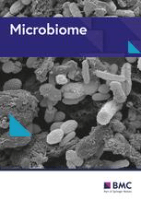
Microbiome
Scope & Guideline
Innovating Solutions Through Microbial Research
Introduction
Aims and Scopes
- Microbiome-Host Interactions:
Explores how microbiomes interact with their hosts, influencing health and disease outcomes, with a focus on mechanisms of interaction and functional implications. - Nutritional and Dietary Impacts:
Investigates how different diets and nutritional strategies affect the composition and function of microbiomes in various animal species, emphasizing the role of specific dietary components. - Microbial Dynamics and Ecology:
Analyzes the dynamics of microbial communities in response to environmental changes, host factors, and management practices, contributing to our understanding of microbial ecology. - Antimicrobial Resistance and Health:
Examines the emergence and transmission of antimicrobial resistance within microbiomes, particularly in agricultural settings, and its implications for animal and public health. - Application of Omics Technologies:
Utilizes advanced omics technologies (metagenomics, metabolomics, etc.) to characterize microbiomes and their functional capabilities, driving innovations in animal health and nutrition. - Conservation and Biodiversity:
Addresses the role of microbiomes in conservation efforts, particularly in threatened and endangered species, highlighting their importance in ecological resilience.
Trending and Emerging
- Microbiome and Immunity:
There is a growing interest in understanding the relationship between microbiomes and immune responses, particularly how microbiota composition influences host immunity under various conditions. - Microbiome in Aquaculture:
Research on microbiomes in aquatic species, particularly in aquaculture, is trending, emphasizing the role of microbiota in health, growth performance, and disease resistance in fish. - Cross-Species Microbiome Comparisons:
Emerging studies are increasingly comparing microbiomes across different species to identify conserved functions and ecological roles, providing insights into evolutionary biology. - Environmental Influences on Microbiomes:
Investigations into how environmental factors, such as urbanization and climate change, impact microbial communities are gaining momentum, reflecting broader ecological concerns. - Microbiome in Wildlife Conservation:
There is an increasing focus on the role of microbiomes in wildlife conservation efforts, particularly in understanding how microbiota contribute to the health and survival of endangered species. - Integration of AI and Machine Learning:
The application of artificial intelligence and machine learning in analyzing microbiome data is emerging, enhancing predictive modeling and understanding of complex microbiome interactions.
Declining or Waning
- Traditional Antibiotic Studies:
Research focused on the effects of traditional antibiotics on microbiomes appears to be waning, likely due to a shift towards exploring alternative health interventions and the implications of antibiotic resistance. - Single-Species Microbial Studies:
The emphasis on studies involving single-species microbiota is decreasing as the field moves towards more complex, multi-species interactions and ecological dynamics. - Static Microbiome Profiles:
There is a decline in studies that present static profiles of microbiomes without exploring their functional capacities or dynamics, reflecting a broader interest in understanding microbiome adaptability. - Host-Only Studies:
Research that exclusively examines host factors without consideration of the microbiome is becoming less prevalent, as the interconnectedness of hosts and their microbiomes gains more recognition. - Simplistic Dietary Impact Assessments:
The simplicity of dietary impact assessments on microbiomes is declining, with a growing preference for comprehensive studies that consider multiple dietary components and their interactions.
Similar Journals
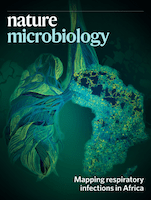
Nature Microbiology
Transforming Insights into Impactful DiscoveriesNature Microbiology is a premier journal published by NATURE PORTFOLIO that has firmly established itself within the realms of microbiological research since its inception in 2016. Based in the United Kingdom, this prestigious journal specializes in the intricacies of applied microbiology, cell biology, genetics, immunology, and medical microbiology, making it a cornerstone for academics and professionals alike. With an impressive Scopus ranking placing it in the top tier across various relevant categories—such as rank #3 in Genetics and #2 in Applied Microbiology—it underscores the journal’s commitment to high-quality, impactful research. Although it operates under a subscription model, Nature Microbiology's broad Open Access policy facilitates greater dissemination and visibility for its authors. The journal's objectives are centered around publishing cutting-edge advancements that enhance our understanding of microbial life, its interactions, and applications in health and disease. As a Q1 journal across multiple disciplines, it holds immense significance for researchers, professionals, and students enthusiastic about the latest innovations and breakthroughs in microbiology.
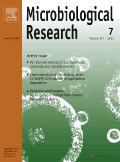
MICROBIOLOGICAL RESEARCH
Leading the Charge in Microbial AdvancementsMICROBIOLOGICAL RESEARCH, published by Elsevier GmbH, serves as a leading platform for advancements in the field of Microbiology, holding an impressive Q1 ranking in its category as of 2023. With an ISSN of 0944-5013 and E-ISSN 1618-0623, this journal has been instrumental in disseminating high-quality research since its inception in 1994 and continues to contribute significantly to the academic landscape through 2024. Positioned within the top 13% of publications in the Immunology and Microbiology category, ranked #24 out of 182 according to Scopus, it attracts the attention of researchers, professionals, and students alike. While the journal is not open access, it offers vital insights and peer-reviewed articles that drive innovation and exploration within microbiological research. Its rigorous selection process underscores the importance of quality and relevance in advancing knowledge in this dynamic field.

Microorganisms
Exploring the unseen world of microorganisms.Microorganisms is a leading open-access journal published by MDPI based in Switzerland, catering specifically to the rapidly evolving fields of microbiology and virology. Since its inception in 2013, the journal aims to foster the dissemination of high-quality research through its comprehensive and interdisciplinary platform, with a particular focus on both fundamental and applied microbiological sciences. Contributing to its esteemed reputation, Microorganisms holds a commendable Q2 ranking in the categories of Microbiology and Virology, as well as in Medical Microbiology, highlighting its significance in the academic community. With a consistent impact, evidenced by its rankings in Scopus—such as rank #25 in Virology and #56 in Microbiology—the journal serves as an invaluable resource for researchers, professionals, and students looking to stay at the forefront of microbiological research. As an open-access journal, Microorganisms ensures that vital research findings are readily available to a global audience, promoting collaboration and innovation in the study of microbial life and its implications for health and disease.
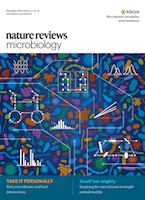
NATURE REVIEWS MICROBIOLOGY
Navigating the Cutting-Edge of Microbial ResearchNATURE REVIEWS MICROBIOLOGY, published by NATURE PORTFOLIO, stands as a leading journal in the field of microbiology, distinguished by its Q1 ranking in multiple categories, including Immunology, Infectious Diseases, and Microbiology for 2023. With an impressive niche impact factor, this journal serves as a vital resource for researchers, professionals, and students seeking comprehensive and cutting-edge reviews on various aspects of microbiology and immunology. Operating from the United Kingdom, the journal covers a wide range of topics reflecting the rapid advancements in the field, while maintaining rigorous editorial standards. Although it does not offer open access, the journal’s articles are essential for anyone aiming to stay at the forefront of microbial research and infectious disease studies. Established in 2003, it continues to thrive as a premier source of knowledge, offering critical insights into ongoing microbial challenges and innovations in research, thereby contributing significantly to our understanding of microbiological complexities.

Microbiology Research
Advancing the Frontiers of Microbial ScienceMicrobiology Research, published by MDPI, stands as a pivotal open-access journal in the field of microbiology, having established its presence since 2010. Based in Switzerland, this journal strives to provide a platform for innovative research and cutting-edge findings in various branches of microbiology, including medical microbiology and molecular biology. With an impact factor that reflects its dedication to scholarly excellence, Microbiology Research is classified in the Q3 category for both microbiology and medical microbiology, and Q4 for molecular biology as of 2023, indicating its growing importance and outreach within these domains. The journal aims to foster discussion and collaboration among researchers, professionals, and students by presenting articles that cover a wide array of topics and methodologies in microbiological research. Leveraging its open-access model, Microbiology Research ensures that high-quality research is accessible to a global audience, thus facilitating the advancement of knowledge and innovation in the microbial sciences.
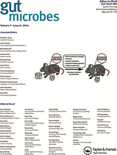
Gut Microbes
Charting New Territories in Microbiome ResearchGut Microbes, published by TAYLOR & FRANCIS INC, stands as a leading academic journal in the fields of Gastroenterology, Infectious Diseases, and Microbiology, with a distinguished Q1 ranking in all relevant categories for 2023. With an ISSN of 1949-0976 and an E-ISSN of 1949-0984, this journal has been at the forefront of microbiome research since its inception in 2010 and continues to provide an essential platform for the dissemination of groundbreaking studies and reviews related to gut microbiota and health. Researchers and professionals benefit from an impressive impact factor, underlining the journal's commitment to high-quality peer-reviewed articles that push the boundaries of our understanding of microbial interactions and their implications in various medical contexts. While it operates under a traditional subscription model, the journal ensures that its content remains accessible to the global scientific community through institutional access programs. As we look ahead to converging years until 2024, Gut Microbes remains a pivotal resource for those seeking to explore the intricate connections between the gut microbiome, health, and disease.

FEMS MICROBIOLOGY REVIEWS
Transforming Insights into Actionable ScienceFEMS Microbiology Reviews, published by Oxford University Press, is a leading journal in the field of microbiology, with a notable impact in related disciplines such as infectious diseases and medicine. Since its inception in 1989, this esteemed journal has grown to occupy a prestigious position, consistently ranking in the first quartile (Q1) in various categories, including Infectious Diseases, Medicine (miscellaneous), and Microbiology. With an impressive Scopus ranking of #13 in Microbiology and #25 in Infectious Diseases, it is recognized for its high-quality and impactful reviews that bridge the gap between fundamental microbiological research and practical applications. Aimed at researchers, professionals, and students alike, FEMS Microbiology Reviews offers critical insights and comprehensive analyses, making it an essential resource for those engaged in the dynamic study of microbial life and its implications for health and disease.
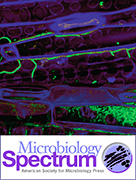
Microbiology Spectrum
Empowering discoveries in microbiology and beyond.Microbiology Spectrum is a prominent peer-reviewed journal published by the American Society for Microbiology, dedicated to advancing the field of microbiology through the dissemination of high-quality research. Since its inception in 2013 and continuing until 2024, the journal has established a strong presence in key domains such as microbiology, immunology, cell biology, and ecology, achieving impressive quartile rankings including Q1 in Infectious Diseases and Q1 in Immunology and Microbiology as of 2023. With an emphasis on open access to its scholarly content, Microbiology Spectrum aims to foster collaboration and knowledge sharing among researchers, professionals, and students alike. The journal's scope encompasses a diverse range of topics pertinent to the field, making it an essential resource for anyone involved in microbiological research and its applications. Researchers looking to publish their findings in a respected journal will find Microbiology Spectrum's robust impact factor and Scopus rankings serve as testament to its significance and influence within the academic community.
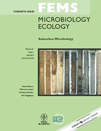
FEMS MICROBIOLOGY ECOLOGY
Unveiling the Hidden Roles of Microorganisms in EcosystemsFEMS Microbiology Ecology is a prestigious journal published by Oxford University Press, specializing in the dynamic field of microbiology and its ecological implications. With an impressive impact factor and consistently ranked in the top quartiles (Q1) across multiple categories—including Applied Microbiology and Biotechnology, Ecology, and Microbiology—this journal serves as an essential resource for researchers and professionals aiming to advance their understanding of microbial interactions within ecosystems. Established in 1990 and spanning to 2024, FEMS Microbiology Ecology delivers cutting-edge research, reviews, and insightful discussions that illuminate the complex roles microorganisms play in environmental health and sustainability. Located in the United Kingdom, this journal provides a global platform for discourse, making significant contributions to both theoretical frameworks and practical applications in the biotech and environmental science sectors. Researchers and students alike will find a wealth of information that not only enriches their knowledge but also inspires innovative solutions for ecological challenges.

AIMS Microbiology
Exploring the frontiers of microbiology with open access knowledge.AIMS Microbiology, published by the American Institute of Mathematical Sciences (AIMS), is an esteemed Open Access journal dedicated to advancing the field of microbiology since its inception in 2015. With an ISSN of 2471-1888, the journal aims to disseminate high-quality research and innovative findings pertaining to both fundamental and applied microbiology, encompassing areas such as medical microbiology, immunology, and related life sciences. Recognized for its academic rigor, AIMS Microbiology has achieved a significant standing, evidenced by its current Q2 ranking in both Microbiology and Medical Microbiology categories, along with impressive percentile rankings within prestigious Scopus metrics. Based in the United States, the journal not only emphasizes accessibility and widespread dissemination of knowledge but also plays a crucial role in fostering collaboration among researchers and professionals in the microbiological sciences. By providing a platform for collaborative research and innovative ideas, AIMS Microbiology is poised to influence the future development and application of microbiological research, making it a valuable resource for students, researchers, and practitioners alike.